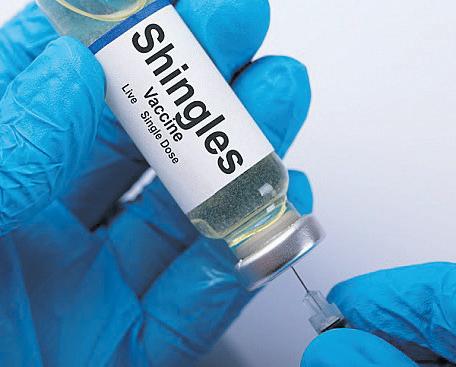
1 minute read
Urgent Directive to Doctors: Prioritize Vulnerable Patients Amidst Depleting Shingles Drug Supplies
Five million Australians now qualify for a complimentary shingles vaccination but accessing it may be delayed until the following year. The $826.8 million initiative, commencing November 1, extends eligibility to individuals aged 65 and over, First Nations people over 50, and immunocompromised individuals aged 18 and above at high risk of herpes zoster infection. Administered in two doses, this vaccine is crucial for full protection.
Unfortunately, the vaccine supply remains restricted, prompting discussions between the federal government and GSK, the pharmaceutical company. Managing the National Immunisation Program and vaccine distribution falls under the government’s purview in collaboration with states and territories.
In New South Wales, healthcare providers anticipate a monthly allocation of merely fve to 20 doses (depending on clinic capacity), necessitating prioritization for high-risk patients. The former shingles vaccine, Zostavax, was removed from the National Immunisation Program on November 1, compelling interested individuals to seek private acquisition if available.
Jointly with medical bodies, NSW Health advised practitioners to prioritize high-risk patients initially due to the anticipated high demand and limited Shingrix supply. This vaccine’s scheduling, requiring two to six months between doses and one to two months for immunocompromised individuals, prompts providers to strategize patient bookings for the second dose considering their current vaccine stock.
Shingrix, previously priced at up to $560 for two doses, offers approximately a decade of protection. An anticipated distribution of 1.6 million doses between now and June 30, 2024, will be managed by states or territories, ensuring local providers receive adequate stock.
Shingles, resulting from varicella zoster virus reactivation (responsible for chickenpox), presents as a painful, blistering rash, predominantly affecting one side of the body. Its complications include postherpetic neuralgia, causing severe, prolonged nerve pain in one in fve shingles sufferers, predominantly in individuals aged 65 and above. Antiviral drugs, if administered early during the onset, can be effective in managing the infection.
Despite limited supplies in South Australia, health authorities advocate booking appointments post-receipt of stock to meet vaccine demand. Unlike urgent public health needs seen in infuenza or COVID-19 vaccination, there isn’t an immediate imperative for rapid Shingrix vaccination.
Health Minister Mark Butler highlighted the provision of optimal protection against shingles for older Australians through a comprehensive, widespread vaccination program.










